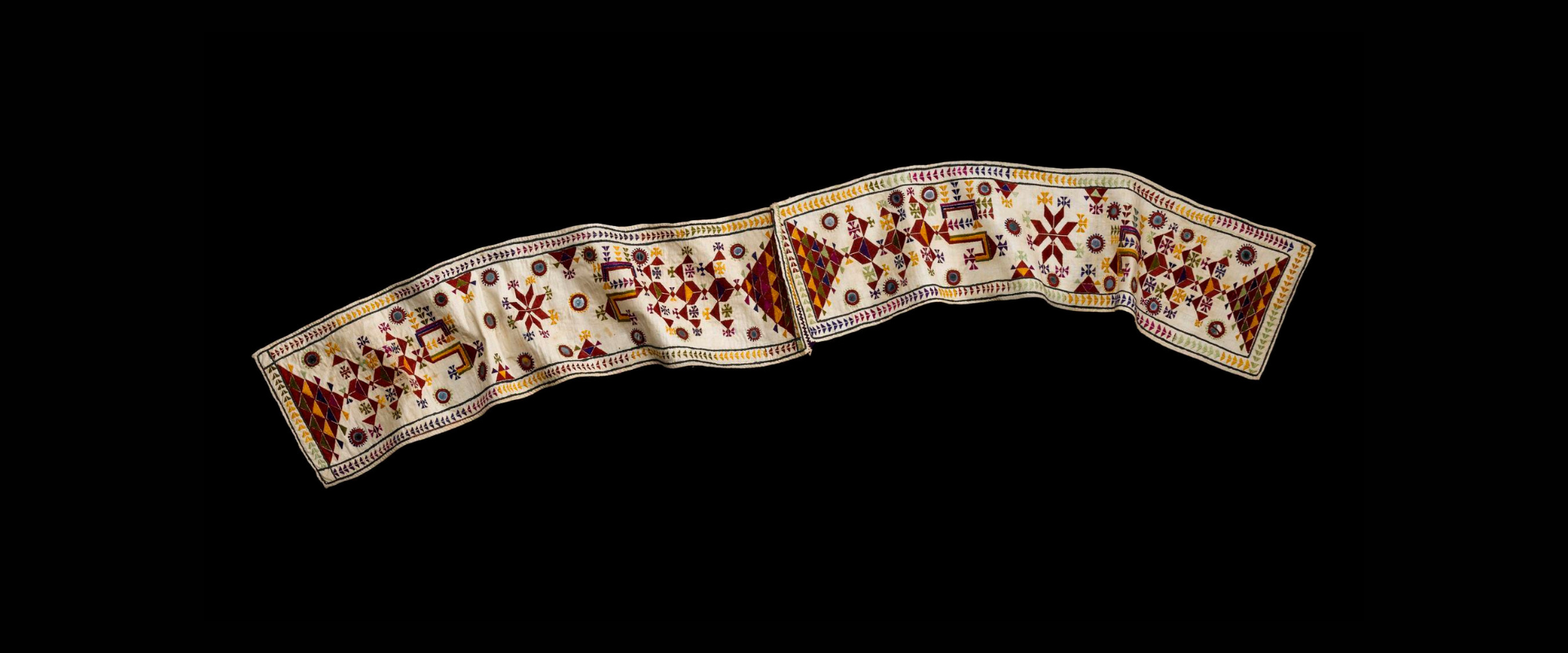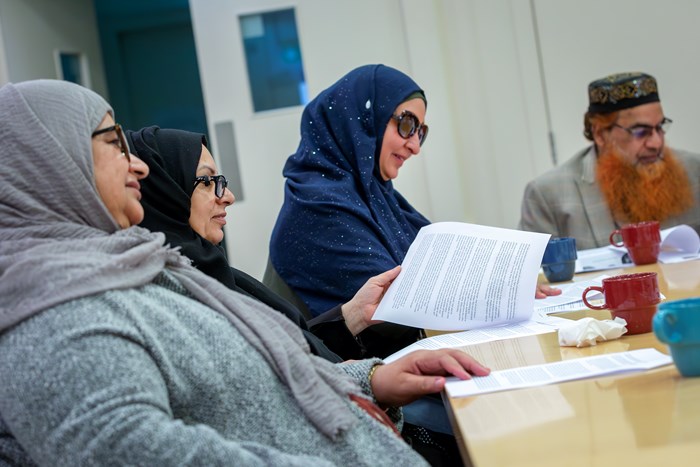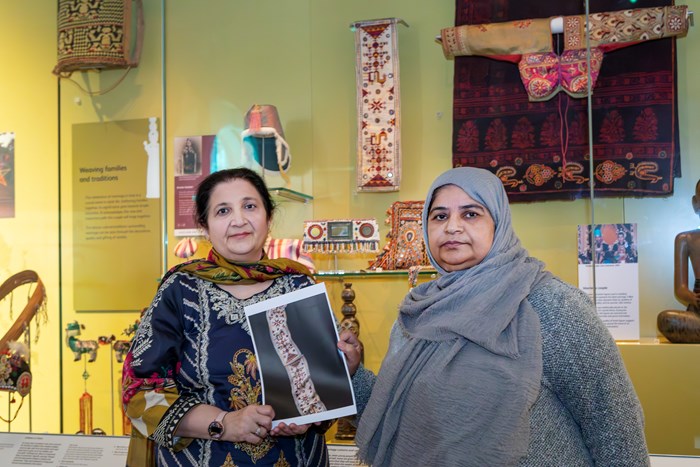Key in a search term below to search our website.
Key in a search term below to search our website.

कहानियाँ Kahaniyan of South Asia
This scarf can be found on Level 1 in the Patterns of Life gallery at the National Museum of Scotland.
This man’s scarf embodies the beautiful craftsmanship of the people of Sindh, Pakistan. It is worth noting that this craftsmanship is also common in western parts of India, Gujarat and Rajasthan. The work is said to originate in Iran, from where it made its way to India during the Mughal era. The Jat community of what is now Kutch district, India, migrated from Baluchistan and brought the technique of mirror work and embroidery with them. Curiously enough, this industry is also run by rural women of Sindh, in the Tharparkar District of Pakistan.
Patchwork and mirror work are a popular rural craft of Sindh. Carefully cut pieces of cloth of desired shapes are stitched on the base material in a geometrically arranged pattern merging the craft skills and Sindhi tradition. The incorporation of mirror work into the embroidery adds a myriad of reflection of light to the brightly coloured fabric base. Costumes embroidered with such ornaments become symbols of traditional and cultural festivity.

Scarf for a bridegroom, cream cotton embroidered in coloured silks: Pakistan, Sindh, Tharpakar, c. 1950 - 1960 (A.1982.852)

The group discussing and reviewing their written material. ©ruth@rutharmstrong.com
Nusrat, with a twinkle in her eye, mentioned she tried to learn the technique when she was small but found it difficult and gave up, but she wished she had learnt the skill. For Ghazala and Nargis it was their fond memories of sitting on a 'charpai', a four-footed multifunctional bed on a sunny winter afternoon, sewing and designing their costume with beautiful patterns and mirrors.
It was a kind of family affair where women, after completion of their household work, would sit down with their design and chatter along. This also gave them an opportunity to socialise with their friends and neighbours as all the ladies would gather around for a chit chat. For those of us who have pieces of Sindhi work in our homes, they remind us of such stories; every time we display them in our home be it a small tablecloth, an Asian suit or a bedsheet, it takes us back to our childhood tales, our culture and our home.

Discovering the scarf in the Patterns of Life gallery.